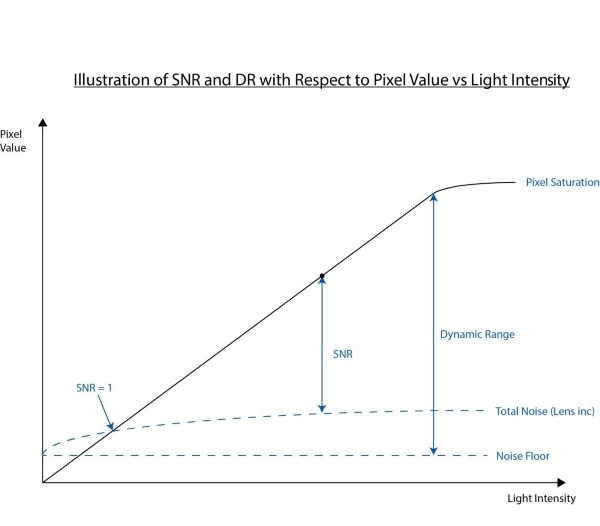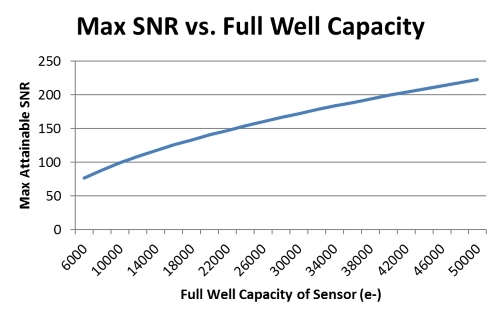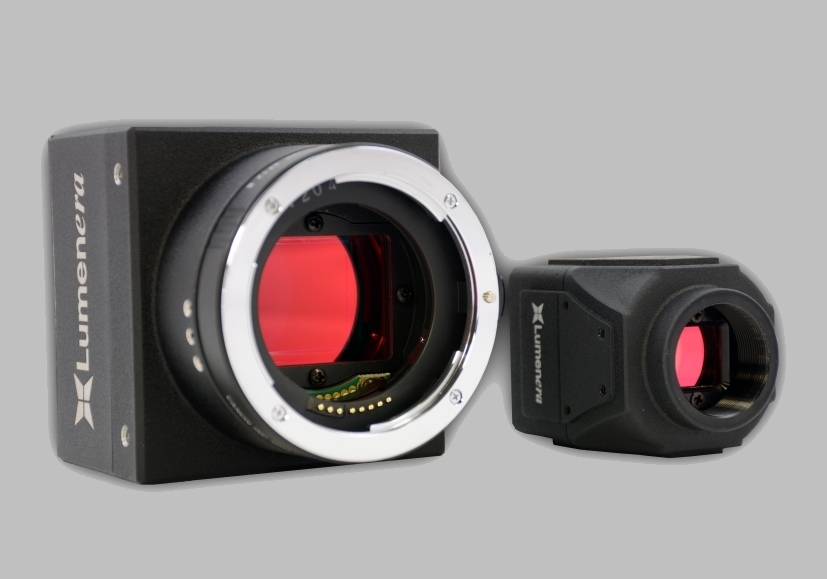Dynamic Range (DR) and Signal-to-Noise Ratio (SNR): Two terms that are often confused with one another when discussing or comparing cameras. This is likely due to the similarity of both measurements. Let’s clarify the differences between DR and SNR by providing definitions, equations, and descriptions for each.
Dynamic Range
Dynamic range quantifies the working range of a camera within which usable data can be extracted. In other words, it illustrates the brightest and darkest areas of a scene that can be captured in a single image and still be read.
Definition: Logarithmic ratio between the camera’s full well capacity and its noise floor.
Equation:

Units: Dynamic Range: dB full well capacity: e- (electrons) read noise: e- (RMS)
Signal-to-Noise Ratio
The signal-to-noise ratio quantifies the data found in a particular image. It establishes an indication as to the signal quality found in the image indicating with what amount of precision machine vision algorithms will be able to detect objects in an image.
Definition: Linear ratio between recorded signal and total root mean squared noise.
Equation:

Units: SNR: unitless* signal: e- or DN (Digital Numbers) noise: e- or DN (RMS)
*SNR can also be illustrated in decibels, but for the purpose of this article, only linear SNR was used.
The following graphically illustrates SNR and dynamic range as a pixel fills with increased light intensity. SNR is measured at the specific point when the exposure is stopped whereas dynamic range is calculated at the saturation point of the pixel.

SNR takes into account all noise sources. When strong signals are used (lots of light is available) the dominant noise source becomes shot noise – the random nature of the arrival of photons to a specific pixel. Due to the Poisson statistical distribution of the noise, shot noise is equal to the square root of the signal.
To calculate the maximum signal to noise ratio of a camera, simply use the following equation, where FW is the full well capacity of the sensor:

The maximum SNR equation here is an approximation as it ignores other sources of noise since the shot noise is much larger than all other noise sources which are, therefore, negligible.
For strong signals, it can be inferred that sensors with larger full well capacities will have larger signal-to- noise ratios. Below is a graph depicting the max SNR of sensors with varying full well capacities:

The result is that a larger dynamic range is always preferable because it allows for a higher signal-to- noise ratio, but it is not guaranteed. SNR will always be less than the dynamic range because it is limited by the noise in the image and is not always maximized due to challenging lighting conditions, exposure time limitations, and the choice of optics.
Learn More
Sign up for our newsletter to automatically receive regular updates from Lumenera.


